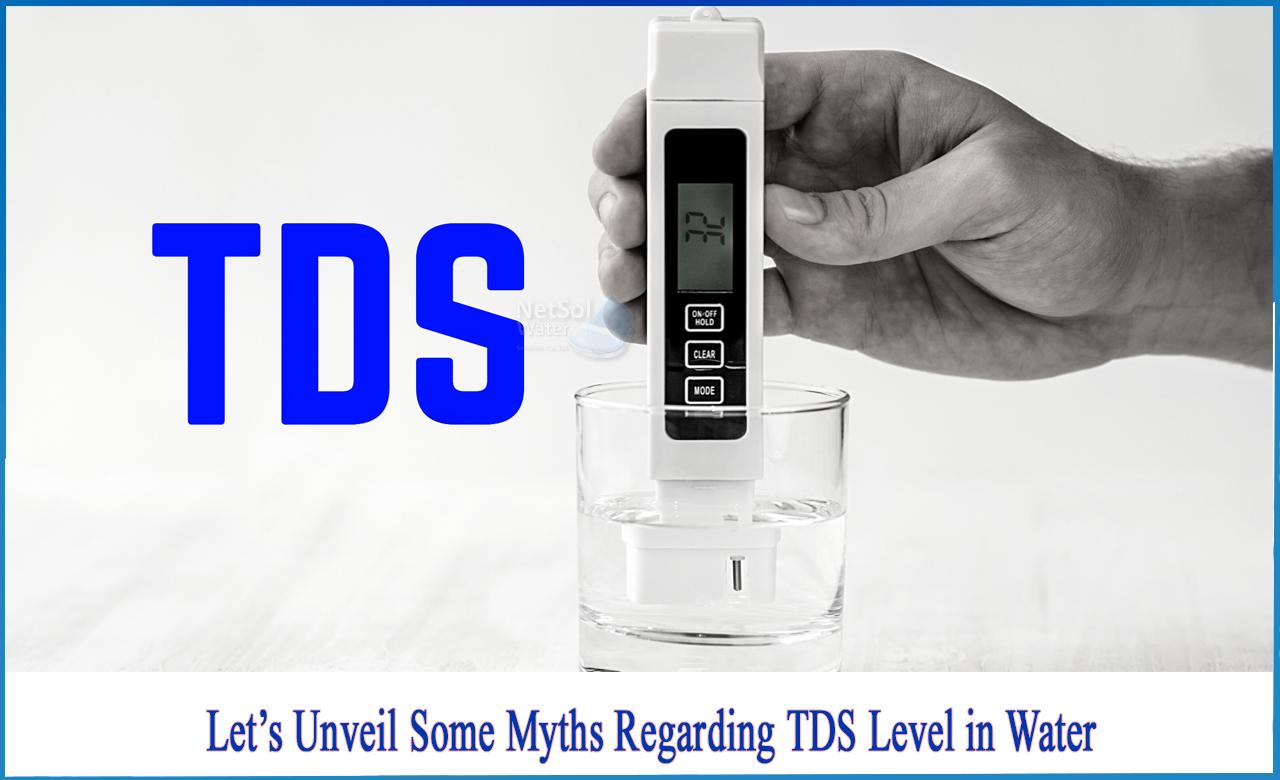
According to the WHO, the acceptable range for TDS levels in water is 300 parts per million (ppm) for human consumption. Water with a TDS level above 300 ppm is not harmful, but it may taste salty and contain a high concentration of minerals. TDS levels have an effect on the colour, odour, and taste of water.
Water with concentrations higher than 300 ppm would necessitate the use of an additional RO technology to purify. RO water purifiers, use special membranes that keep certain dissolved solids out of the water, resulting in palatable, sweet-tasting water. Water with a TDS level greater than 1000ppm may be unsafe for human consumption. As per the WHO report data, water with TDS beyond 1200ppm is said to be unacceptable.
Bạn đang xem: MYTH1: Is high level of TDS present in water good for drinking?
MYTH 2: Can TDS of water be increased?
Drinking water with low TDS is not harmful to the body; ideally, the TDS level should not rise after filtration. In water treatment plants, reverse osmosis is used to remove all dissolved compounds, including many potentially hazardous elements such as salt and lead.
MYTH 3: Is TDS in water bad?
TDS-low water is more corrosive and can leach dangerous metals such as lead or copper from plumbing pipes and fittings. Water with a reasonable amount of TDS is the best water to drink. Water with a moderate TDS level tastes better than water with a low or high TDS level.
MYTH 4: Are total dissolved solvents healthy for the body?
Xem thêm : 1 गज में कितना फुट होता है?
The type of salts and compounds released in water determines whether the TDS level in water is good or bad for the body. TDS can be made up of a variety of salts, minerals, and organic compounds, including calcium, chlorides, sulphates, magnesium, potassium, carbonates, and bicarbonates, among others. While some of these can provide minerals to the body, the majority of these are considered harmful and must be purified before drinking water.
MYTH 5: What can happen if one will drink low TDS water?
Low-mineral water can lead to:
· On average, body water volume and serum sodium concentrations are reduced by nearly 20%.
· Sodium, potassium, chloride, and calcium concentrations in serum
· On average, magnesium ion removal from the body is increased by nearly 20%.
MYTH 6: One should not drink RO water as it removes TDS from water!
The RO water purifier does not completely remove TDS from the water, but it does remove the excess amount of TDS. Water with a high TDS level tastes saltier, whereas water with a low TDS level has no negative effects on the human body. The RO water purifier improves the taste of water by removing excess TDS.
Consumption of low TDS water, whether naturally occurring or obtained through a treatment process (such as a RO device), has no negative effects on the human body. The mineral content of body fluids and the discharge of various types of ions from the body of normal healthy individuals are regulated by the human body’s own control mechanism (regardless of whether drinking water is high on TDS or low in TDS).
It is also clear that a healthy person’s consumption of low TDS water cannot have a negative impact on the human body. Several types of scientific literature and research have discovered that drinking low TDS water has no negative effects on the human body.
Overall, it is critical to understand the TDS level of your water source and then select the best water purification method to treat water. RO water purifiers/plants are the most effective way to purify water with high TDS levels and provide safe drinking water.
Nguồn: http://nanocms.in
Danh mục: शिक्षा









